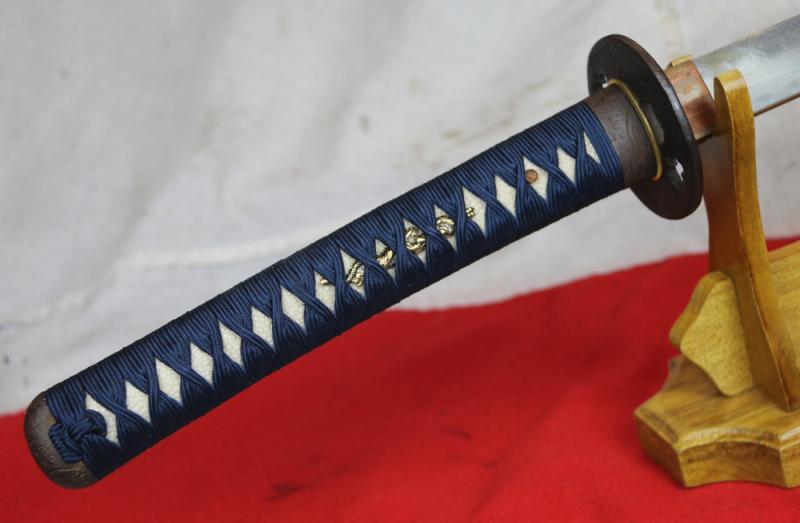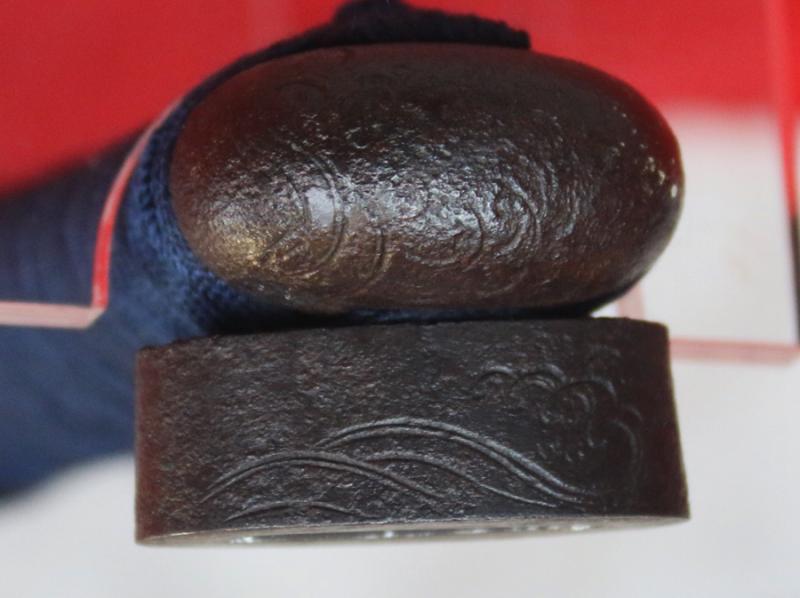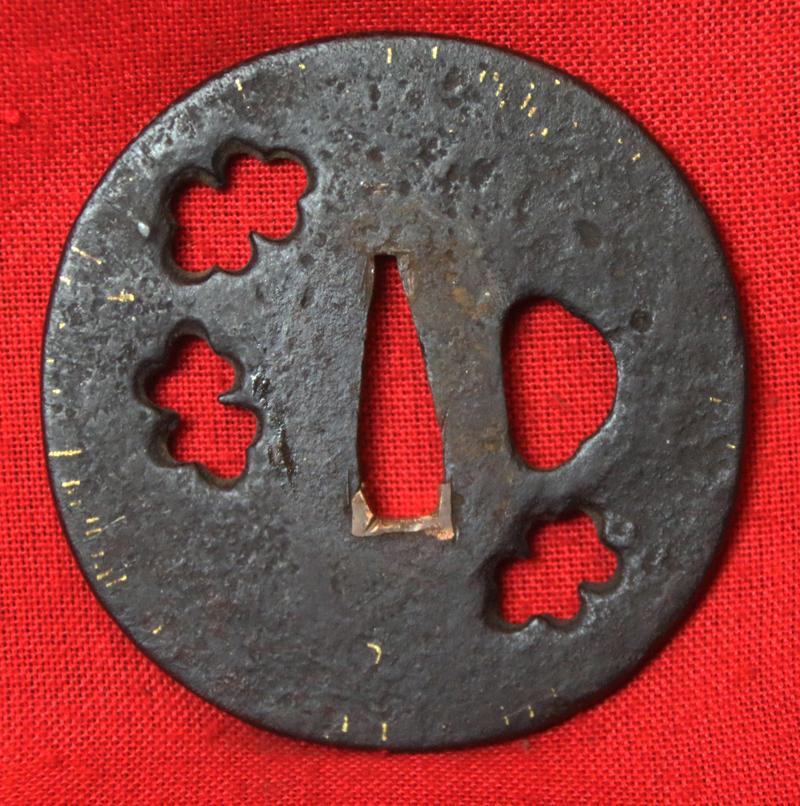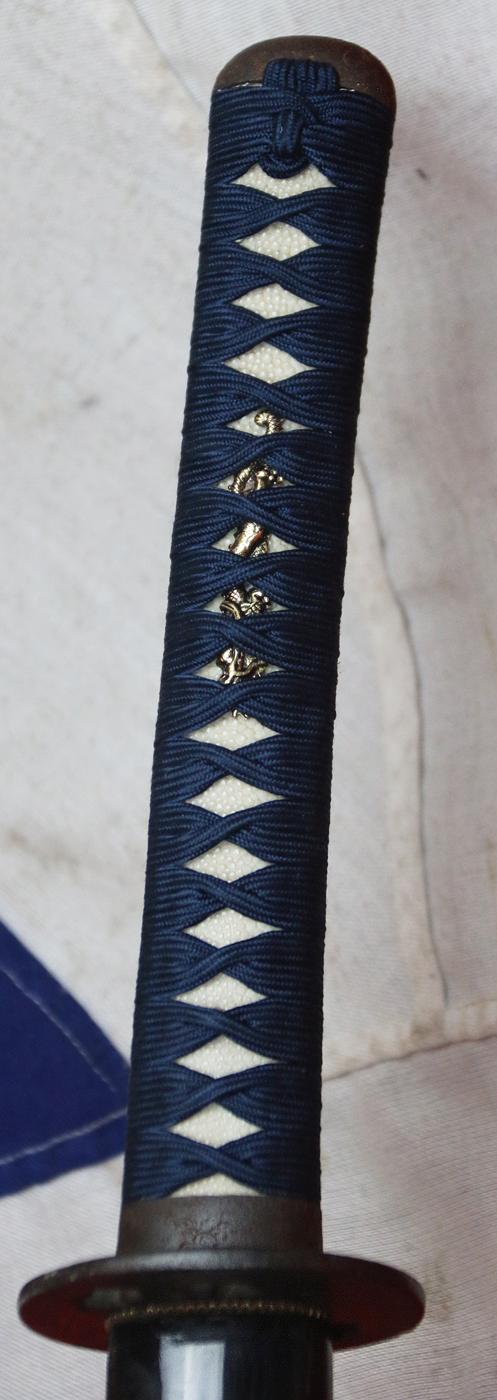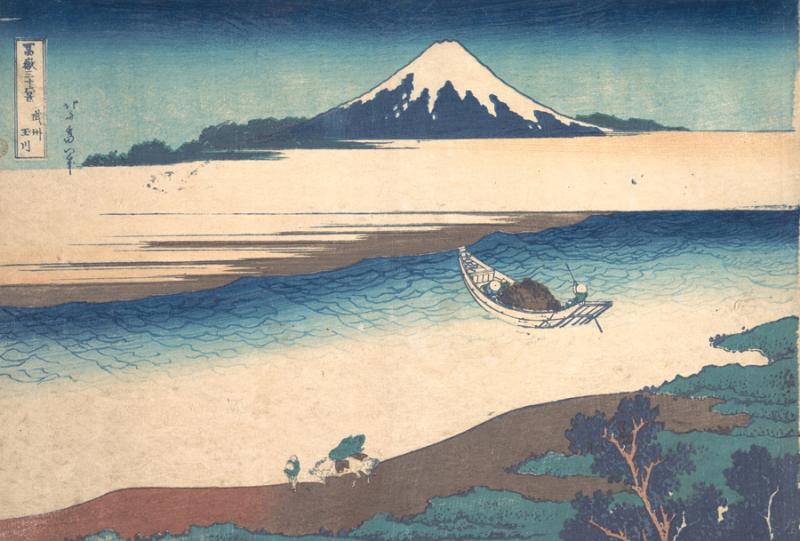A Unique Chance To Own a Superb Signed Mount Fuji Shinto Samurai Katana, Signed Nobukuni Saku, With Mount Fuji Hamon and The Wave Fuchi Kashira.
This fabulous and unique 350 year old sword, by a high rated master swordsmith
It has a most rare, superb hamon that shows a superb horizon and incredibly desirable Mount Fuji hamon a hamon temper line that depicts a sea view of the horizon and Mount Fuji. The original Edo period Fuchigashira hilt mounts are carved iron, Higo style with the representation of the crashing wave pattern that traditionally accompanies Mount Fuji, as can be seen the the world famous painting by Hokusai, 'The Wave' with Mount Fuji in the background. The pierced early edo iron tsuba is further complimentary with pierced clouds.
In the most ancient swords, all hamons were of the straight-edge variety. Irregular patterns started to emerge around the 1300s, with famous smiths such as Kunimitsu, Muramasa, and Masamune, among many others. By the 1600--1700s, hamons with various shapes in them became very desirable, such as trees, flowers, clovers, pillboxes, and many others. Common themes included juka choji (multiple, overlapping clovers), kikusui (chrysanthemums floating on a stream), Yoshino (cherry blossoms on the Yoshino River), or Tatsuta (maple leaves on the Tatsuta River), and one of the most desirable, like this sword has, was the design Fujimi Saigyo (Priest Saigyo viewing Mount Fuji)
Mount Fuji is a composite volcano, growing larger as layer upon layer of lava and ash built up on its slopes. Like its geologic history, Mount Fuji’s sacred history has also developed over time as different religions, beliefs and myths have added new layers. Since ancient times, the mountains of Japan have been revered as sacred places, giving rise to a tradition of beliefs and rituals that scholars call sangaku shinko, meaning “mountain creed.” When Shinto, the native religion of Japan, emerged sometime before the sixth century A.D., it wove this mountain creed into a wider veneration of nature. According to Shinto belief, natural features such as trees, lakes, streams, rocks and mountains are the dwelling places of spirits called kami, which hold influence over human affairs and respond to human prayer and ritual. Kami are believed to be concentrated in mountain areas, and shrines have been erected to mark sacred spots. The introduction of Buddhism from China in the sixth century further developed the practice of mountain worship as Buddhists, who viewed mountain climbing as a metaphor for the spiritual ascent to enlightenment, adopted Shinto sacred mountains as pilgrimage destinations. In the ninth century, a religious sect called Shugendo arose that based its doctrine and practice on mountain climbing itself, believing that practitioners could commune with deities on mountain summits and thereby obtain supernatural powers.
The name “Fuji” most likely came from an indigenous Ainu word meaning “deity of fire”—not surprising for a volcano that erupted often. In about 800 A.D., a shrine was built near the base of the mountain with the hope of placating the god that caused the volcano’s eruptions. Fuji later became regarded as the dwelling of the Shinto goddess Konohana Sakuya Hime, “the Goddess of the Flowering Trees.” Today, she is still the principal deity of the sacred mountain, revered in Shinto shrines at Fuji’s base and summit, including the one originally built for the older fire god, and honored in a fire ceremony at the end of each year’s climbing season. Buddhists found in Fuji an inspiring symbol of meditation and called its summit zenjo, a Buddhist term describing a perfect meditative state. Buddhists also came to regard Fuji as the abode of the Buddha of All-Illuminating Wisdom. In the 14th century, Shugendo practitioners established the first climbing route to lead pilgrims to Fuji’s summit.
The original antique Edo period urushi lacquer saya is having the urushi lacquer fully restored, and the blade repolished
Code: 24435



